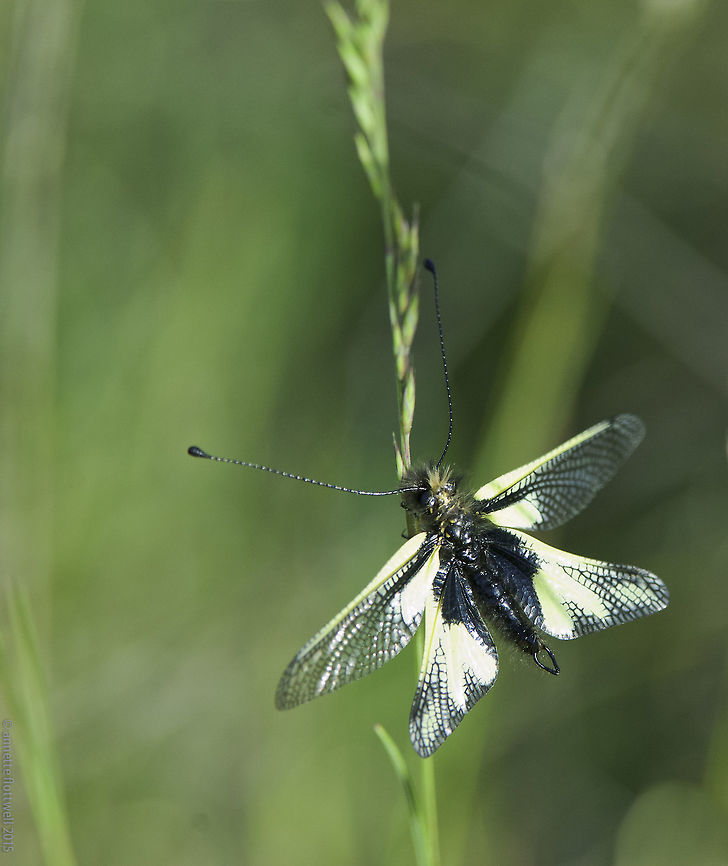
"Libelloides coccajus", the "owly sulphur", is an owlfly species belonging to the family Ascalaphidae, subfamily Ascalaphinae.
Similar species: Net-winged Insects
By Annette Flottwell
All rights reserved
Uploaded Dec 2, 2015. Captured May 10, 2015 18:22.


comments (3)
- it is windy to very windy like on any November day in the Netherlands :) or any other month in the cordillera de Guanacaste , you can't move your body with the macro lens fast enough to adapt to swinging plants
- insects sit in high grass if it happens to be not windy : you can't avoid to move grass and these little beauties have very good eyesight, just like many flutterbies.
the focussing distance of 1m95 can be a bit of a nuisance but a 36mm extension ring gets you to about 1,80.
- or I am after dragonflies in a stream or pond. While it can be nice to get cool feet it is not always advisable in swampy waters or fast flowing ones. Posted 10 years ago